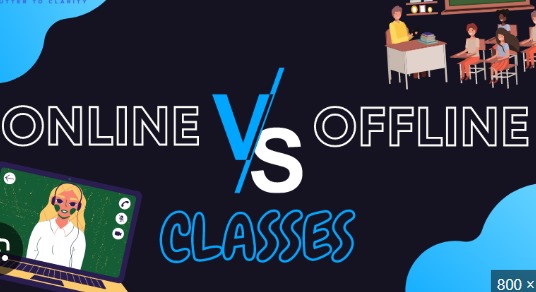Online vs Offline Classes Paragraph
Education has changed a lot in recent years, especially with the rise of technology. One major change is the shift from traditional offline classes to modern online classes. Both methods have their own advantages and disadvantages. Offline classes, also known as physical or classroom learning, involve face-to-face interaction between teachers and students. This creates a more personal learning environment, helps build discipline, and allows students to participate in group activities, ask questions freely, and socialize with peers.
On the other hand, online classes are conducted through the internet using computers, tablets, or smartphones. They became especially popular during the COVID-19 pandemic, when schools and colleges were closed. Online learning offers flexibility in time and location. Students can attend classes from home, which saves travel time and cost. It also provides access to a wide range of digital resources and recorded lectures that can be reviewed anytime.
However, both systems have limitations. In offline classes, students must follow a fixed schedule and may miss lessons if absent. It also may not be accessible for students in remote areas. Online classes, while convenient, can lead to distractions, a lack of motivation, and reduced teacher-student interaction. Poor internet connection or lack of devices can also make online learning difficult for many students.
In conclusion, both online and offline classes have their own strengths and weaknesses. Offline classes are better for personal interaction and hands-on learning, while online classes are more flexible and resource-rich. A combination of both—known as blended learning—might be the best solution for the future. It allows students to enjoy the benefits of both systems and adapt to different learning needs in a changing world.




